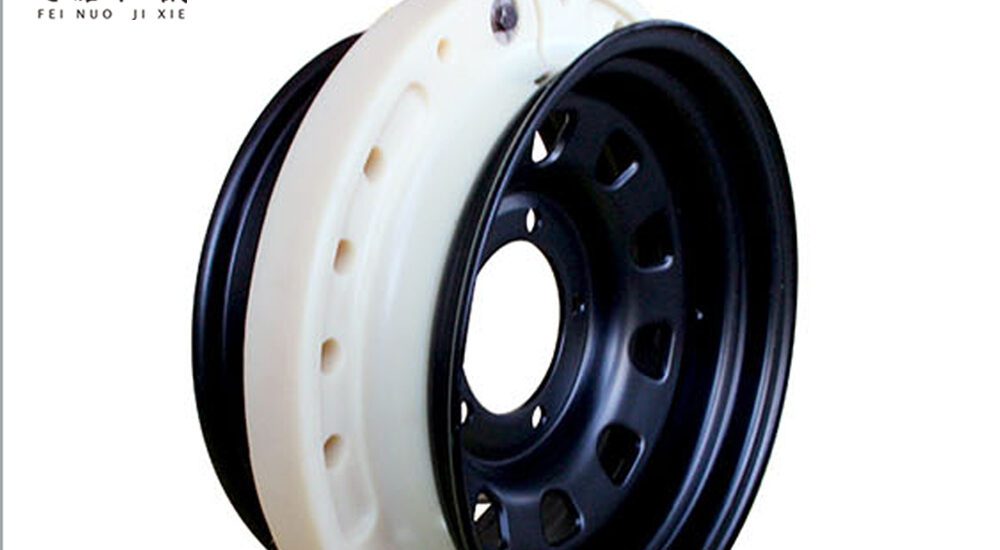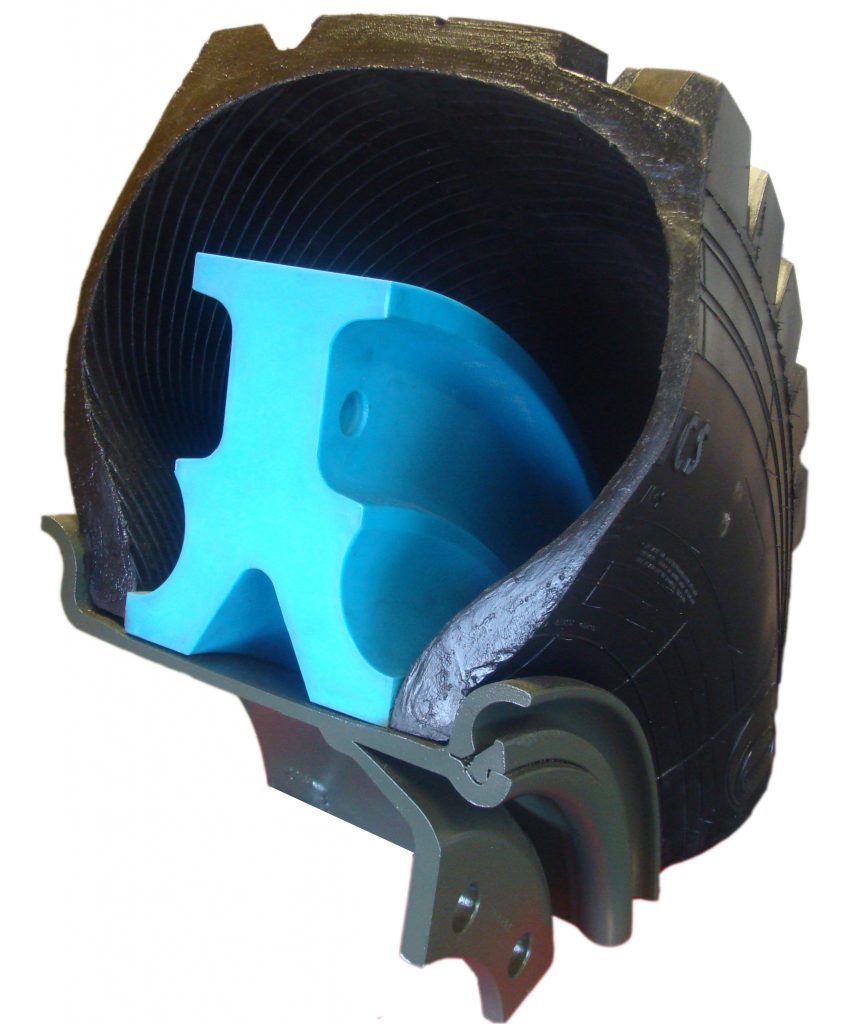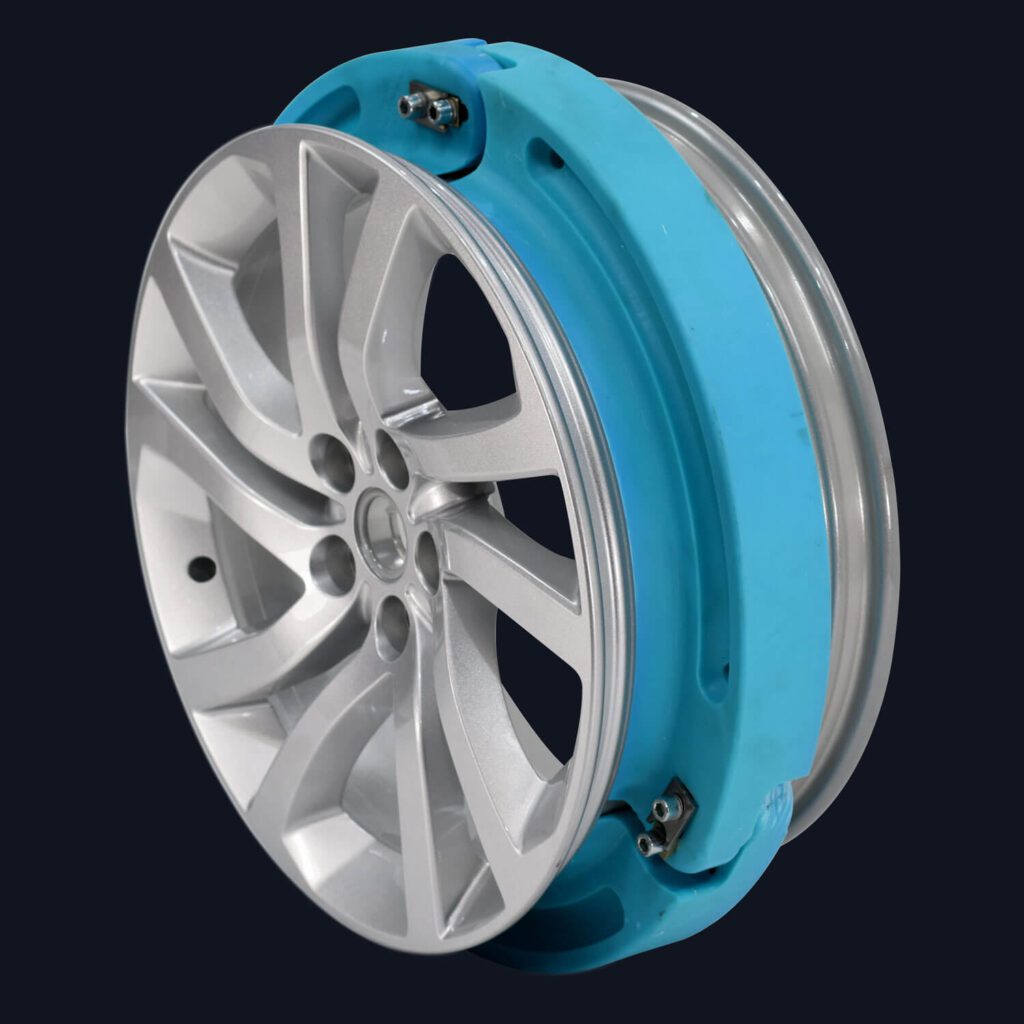- May 14, 2025
- Posted by: feinuojixie
- Category: Injection Molding News


Whether you’re navigating rugged backcountry trails or weaving through congested city streets, tire failure can bring your journey to a sudden halt. Traditionally, off-road adventurers and urban drivers alike have relied on bulky spare tires or risky DIY fixes to cope with flats. But today, innovation is reshaping mobility—and the run flat insert is at the forefront of that change. This advanced tire support system offers a reliable solution that ensures continuous vehicle movement even after complete air loss. No longer confined to military or tactical vehicles, the run flat insert is now making its way into mainstream automotive use, providing unmatched safety, convenience, and confidence for drivers across all terrains.
The Science Behind a Run Flat Insert: How It Works
At the core of every run flat insert is a deceptively simple principle: structural support. When a tire loses air due to a puncture or blowout, a run flat insert acts as an internal brace that supports the vehicle’s weight. Unlike traditional run-flat tires that rely on reinforced sidewalls, a run flat insert fits inside a standard tire and provides a stable platform, enabling the vehicle to continue moving for a limited distance—often up to 50 miles—at reduced speed. This technology typically uses high-strength polymer or rubber-based materials that resist heat, deformation, and wear. As a result, a run flat insert allows drivers to safely reach a service station without the immediate need to stop or change the tire on the roadside.


Off-Road Resilience: How Run Flat Insert Handles Extreme Conditions
In off-road conditions where tire damage is not a possibility but a near certainty, the value of a run flat insert becomes undeniable. Sharp rocks, uneven trails, and sudden elevation shifts can easily puncture conventional tires. A run flat insert provides a robust internal safeguard that ensures mobility even when the tire has been compromised. Off-road enthusiasts appreciate that they can focus on the terrain ahead rather than worry about their tires giving out. Beyond recreational use, vehicles in construction, agriculture, and emergency response also benefit from the extra layer of protection, especially in remote areas where tire repair options are scarce.
Urban Advantages: Run Flat Insert for Everyday Commuters
Urban driving may seem predictable, but hazards like potholes, curb impacts, and construction debris make tire damage a daily risk. For city commuters, a run flat insert offers a powerful combination of safety and convenience. In the event of a flat, there’s no need to pull over on a busy street or wait for roadside assistance. The driver can continue safely to a repair shop, minimizing traffic disruption and personal inconvenience. Moreover, because the run flat insert works with standard tires, it eliminates the need to carry a spare, freeing up valuable trunk space and improving fuel efficiency by reducing vehicle weight.
Run Flat Insert vs. Traditional Tire Backup Options
Compared to spare tires or sealant kits, a run flat insert offers significant advantages. Spare tires take up space and often require manual replacement under less-than-ideal conditions. Sealants may temporarily plug small punctures but cannot support structural failure or large damage. In contrast, a run flat insert is always active, passive in operation, and requires no immediate driver intervention. Its performance under stress—especially during a complete blowout—is unmatched by any temporary fix. Additionally, since a run flat insert is reusable and long-lasting, it offers better value over time.
Military and Tactical Use: The Origin of Run Flat Insert Innovation
The concept of the run flat insert was born in military and tactical environments where mission continuity is critical. Armored personnel carriers, security vehicles, and tactical response units rely on run flat insert to maintain mobility under fire or during high-risk evacuations. These inserts are engineered to perform in extreme temperatures, over sharp debris, and even after multiple tire punctures. Civilian use of run flat insert benefits from this heritage of durability and high performance. The transition of this technology into commercial markets means everyday drivers now have access to the same life-saving mobility once reserved for specialized operations.
Installation and Maintenance: What You Need to Know About Run Flat Insert
Installing a run flat insert is a straightforward process but should be performed by professionals to ensure correct fitment and balance. The insert is mounted inside the tire before inflation and is compatible with a wide range of wheel sizes and vehicle types, from SUVs to sedans. Once installed, it requires minimal maintenance—periodic inspection during regular tire service is typically sufficient. Unlike spare tires that degrade over time, a run flat insert remains functional as long as the tire itself is roadworthy. Its low-maintenance nature makes it ideal for drivers who prioritize reliability without added complexity.
Run Flat Insert and Sustainability: Reducing Waste, Increasing Lifespan
Sustainability is becoming a key concern in automotive design, and the run flat insert contributes to greener mobility in several ways. By reducing the risk of total tire failure, it helps extend the usable life of tires. Drivers can often repair or replace a punctured tire rather than discarding it entirely due to structural damage. This means fewer tires end up in landfills. Additionally, eliminating the need for a spare tire reduces raw material use during vehicle production and lightens the overall vehicle weight, which can improve fuel efficiency. A run flat insert thus supports both safety and environmental responsibility.


Choosing the Right Run Flat Insert: Factors That Matter
Selecting the right run flat insert depends on several factors, including vehicle weight, driving environment, and typical usage. For instance, a lightweight commuter car requires a different type of insert than a heavy-duty SUV used for off-roading. Drivers should consult with tire professionals to ensure compatibility with their existing tires and wheels. Factors such as load rating, material composition, and insert design also influence performance. Brands vary in durability and cost, so choosing a reputable manufacturer with a proven track record can ensure optimal results and peace of mind.
The Road Ahead for Run Flat Insert Technology
As automotive technology continues to evolve, the run flat insert is becoming an essential component of the modern mobility experience. No longer a niche solution, it bridges the gap between off-road ruggedness and urban convenience. Whether used by thrill-seekers, daily commuters, or emergency responders, a run flat insert delivers consistent performance when it matters most. Looking forward, innovations in material science and smart tire systems may further enhance its capabilities, solidifying its role as a critical safety feature in the vehicles of tomorrow. For drivers seeking confidence across every mile, the run flat insert remains a dependable choice—on any road, under any condition.
